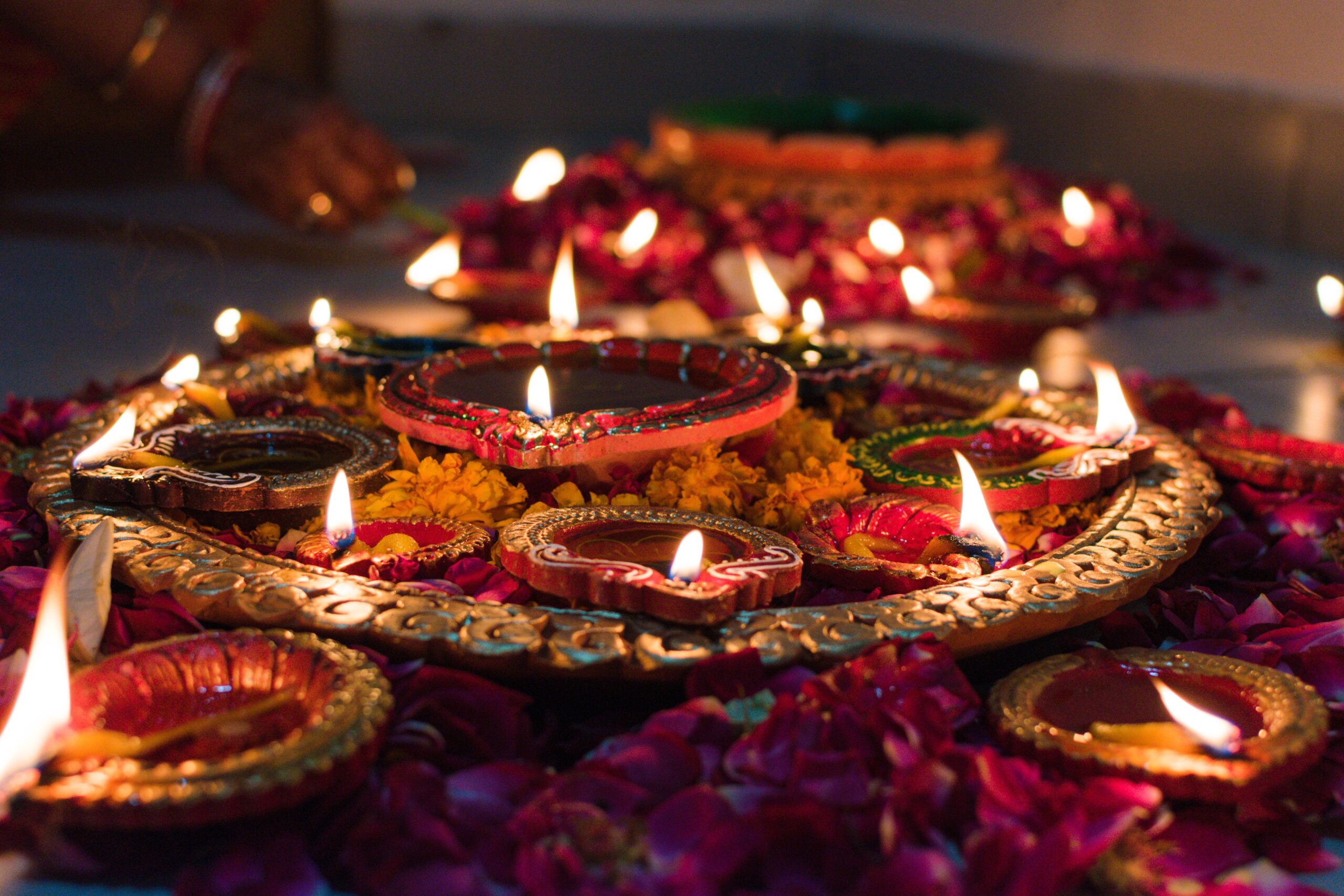Diwali, also known as Deepavali, is one of the most important festivals celebrated by Hindus, Sikhs, Jains, and some Buddhists across the world. The word “Diwali” comes from the Sanskrit word “dipavali,” which means a row of lights. This festival is typically observed over five days in October or November, depending on the lunar calendar. Diwali is a time of joy, light, and hope, and it is celebrated with great enthusiasm and passion by people of all ages and backgrounds!
Diwali roots back to ancient India and is a celebration of the triumph of good over evil, light over darkness, and knowledge over ignorance. There are many different stories and legends associated with Diwali. One of the most popular is the story of Lord Rama, his wife Sita, and his brother Lakshman. According to the story, Lord Rama, who was the prince of Ayodhya, was exiled from his kingdom and lived in the forest for 14 years with his wife Sita and brother Lakshman. During their exile, the demon king Ravana kidnapped Sita and took her to his kingdom in Lanka. Lord Rama, with the help of his loyal devotee Hanuman, fought a great battle with Ravana and finally rescued Sita from his clutches. After their victory, Lord Rama, Sita, and Lakshman returned to Ayodhya, and the people of the kingdom celebrated their return by lighting lamps and decorating their houses with flowers!
Another story associated with Diwali is that of the demon king Narakasura, who was believed to have been defeated by Lord Krishna and his wife Satyabhama. The people of the kingdom celebrated their victory by lighting lamps and fireworks!
In Sikhism, Diwali is celebrated to mark the release of the Sixth Guru, Guru Hargobind, from prison in 1619. The guru was granted freedom along with 52 other prisoners, and he made his way back to Amritsar, where he was welcomed with great fanfare and celebration. This event is now commemorated as Bandi Chhorh Diwas, which means “the day of release of prisoners.”
In Jainism, Diwali is celebrated as the anniversary of Lord Mahavira’s attainment of moksha or liberation from the cycle of birth and death. It is believed that Lord Mahavira attained enlightenment on this day, and his followers celebrate Diwali by offering prayers and lighting lamps in his honor.
Diwali is a time of great joy and excitement, and people prepare for the festival weeks in advance. The festivities typically begin with Dhanteras, which is the first day of the festival. On this day, people buy new clothes, jewelry, and utensils, and also invest in gold and silver as a symbol of prosperity. The second day is known as Choti Diwali or Naraka Chaturdashi, which marks the victory of Lord Krishna over the demon king Narakasura. People light lamps and candles to symbolize the triumph of light over darkness.
The third day of Diwali, also known as the main day of the festival, is considered the most important and auspicious day of the five-day celebration. On this day, people wake up early in the morning and take a bath to purify themselves. They decorate their homes with colorful rangolis, flowers, and lights to welcome Goddess Lakshmi, the Hindu goddess of wealth and prosperity. Families gather for a puja or prayer ceremony to worship the goddess and seek her blessings. The puja involves the offering of various items such as sweets, fruits, and flowers to the goddess, and the lighting of diyas or earthen lamps and candles. After the puja, families exchange gifts and sweets with each other and enjoy a feast together. The day is considered favourable for new beginnings and it is common for couples to exchange gifts and take vows of love and commitment on this day.
